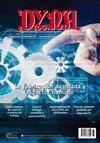用回归分析方法研究瓜尔胶基泡沫材料用于保温材料的可行性
IF 0.7
4区 工程技术
Q3 ENGINEERING, MULTIDISCIPLINARY
引用次数: 0
摘要
瓜尔胶通常用于制药、化妆品和食品工业。然而,它在建筑领域作为绝缘泡沫材料的用途还没有得到广泛的研究,特别是在机器学习方面。本研究旨在探讨由生物聚合物产生的泡沫用于绝缘的潜在用途,并使用两种不同的回归分析来估计其性能。这种泡沫是用一种简单而快速的方法生产出来的,其中包括将瓜尔胶、纤维素和硼酸按不同比例混合,然后在烤箱中干燥。所得泡沫材料具有密度低、导热系数低、力学性能好等优点,是一种非常理想的保温材料。建立了一个回归模型来分析泡沫配方中使用的成分的影响,并为未来的研究提供了一个估计方法。回归模型能够准确预测结果,R2值高达0.99,可以用更少的实验结果获得更多的定量数据。此外,还发现瓜尔胶对泡沫材料性能的影响最为显著。关键词:泡沫,瓜尔胶,导热性,回归,绝缘本文章由计算机程序翻译,如有差异,请以英文原文为准。
INVESTIGATING THE FEASIBILITY OF GUAR GUM-BASED FOAMS FOR INSULATION APPLICATIONS USING REGRESSION ANALYSIS
Guar gum is commonly utilized in the pharmaceutical, cosmetic, and food industries. However, its use as a foam material for insulation purposes in construction fields has not been extensively studied, especially with regards to machine learning. This study aimed to investigate the potential use of foams produced from biopolymers for insulation and to estimate their properties using two different regression analyses. The foams were produced using a simple and quick procedure involving a mixture of guar gum, cellulose, and boric acid in different proportions, and then dried in the oven. The results of the produced foams showed promising features such as low density, low thermal conductivity, and good mechanical properties, which are highly desirable in insulation materials. A regression model was developed to analyze the effects of the components used in the foam formulation and to provide an estimated method for future research. The regression model was able to accurately predict the results, with an R2 value of up to 0.99, allowing for more quantitative data to be obtained with fewer experimental results. Furthermore, it was found that guar gum had the most significant effect on the properties of the foams. Keywords: Foam, guar gum, thermal conductivity, regression, insulation
求助全文
通过发布文献求助,成功后即可免费获取论文全文。
去求助
来源期刊

Dyna
工程技术-工程:综合
CiteScore
1.00
自引率
10.00%
发文量
131
审稿时长
6-12 weeks
期刊介绍:
Founded in 1926, DYNA is one of the journal of general engineering most influential and prestigious in the world, as it recognizes Clarivate Analytics.
Included in Science Citation Index Expanded, its impact factor is published every year in Journal Citations Reports (JCR).
It is the Official Body for Science and Technology of the Spanish Federation of Regional Associations of Engineers (FAIIE).
Scientific journal agreed with AEIM (Spanish Association of Mechanical Engineering)
In character Scientific-technical, it is the most appropriate way for communication between Multidisciplinary Engineers and for expressing their ideas and experience.
DYNA publishes 6 issues per year: January, March, May, July, September and November.
 求助内容:
求助内容: 应助结果提醒方式:
应助结果提醒方式:


